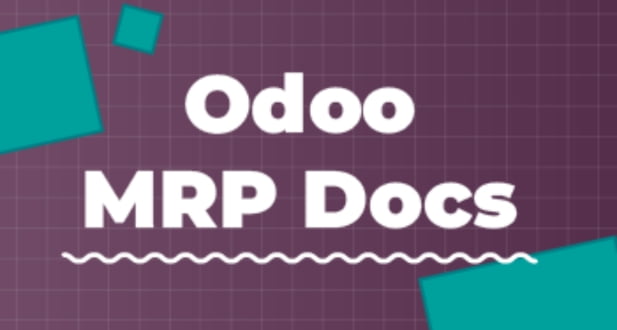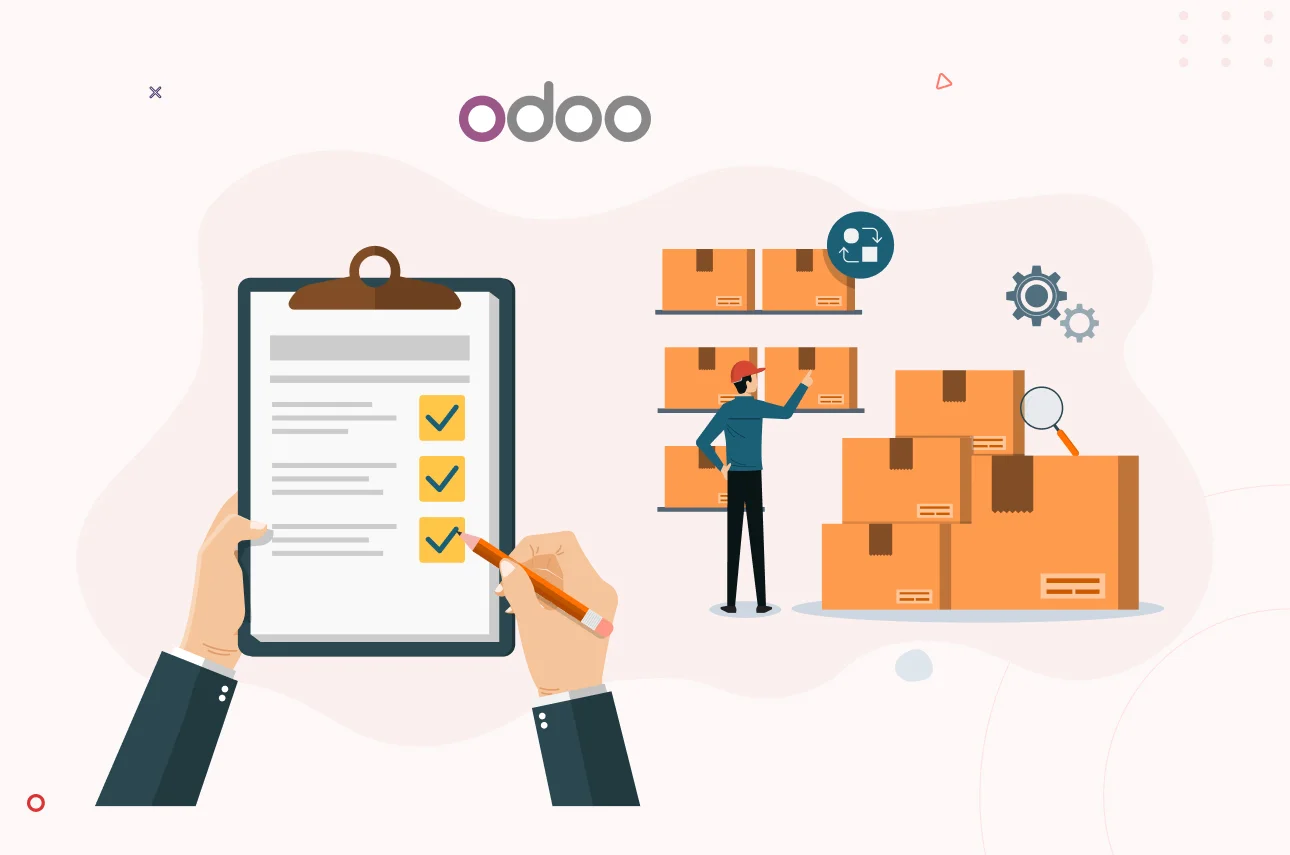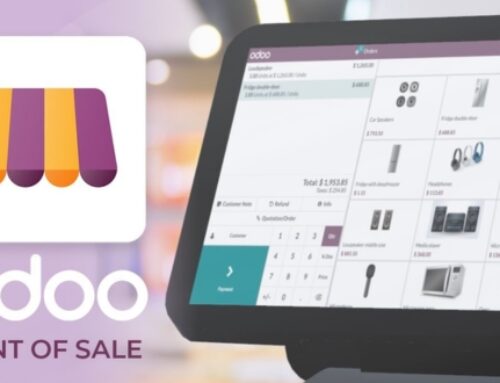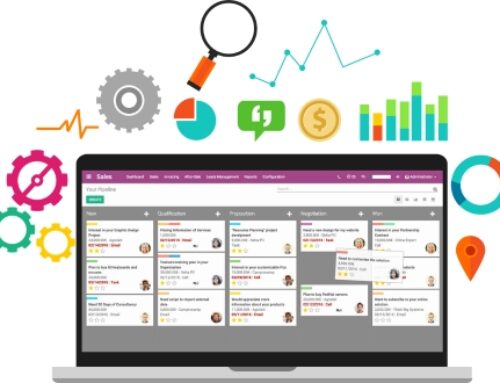Odoo Inventory and Manufacturing Resource Planning (MRP) form an integral part of the Odoo ERP suite, providing businesses with a comprehensive solution for managing their inventory, manufacturing processes, and related operations. These modules work seamlessly together to optimize supply chain management, streamline production workflows, and enhance overall operational efficiency.
Odoo Inventory:
- Inventory Management:
Odoo Inventory serves as a robust tool for organizations to manage their stock efficiently. It provides a centralized platform for tracking inventory levels, locations, and movements. The module allows businesses to categorize products, set reordering rules, and implement real-time stock valuation methods.
- Warehouse Management:
With Odoo Inventory, businesses can organize their warehouses effectively. The module supports multi-warehouse management, allowing organizations to monitor stock across different locations. Warehouse activities such as picking, packing, and shipping are streamlined to optimize logistical processes.
- Real-time Tracking:
Odoo Inventory offers real-time tracking of stock movements, providing visibility into inventory levels and locations. This feature enables businesses to make informed decisions about stock replenishment, reducing the risk of stockouts or overstock situations.
- Barcode Integration:
Barcode integration enhances accuracy and efficiency in inventory management. Odoo Inventory supports barcode scanning, allowing users to quickly record stock movements, conduct stock counts, and track product movements within the warehouse.
- Reporting and Analysis:
The module provides reporting and analytical tools to assess inventory performance. Users can generate reports on stock levels, sales trends, and order fulfillment, facilitating data-driven decision-making in supply chain management.
Odoo MRP:
- Manufacturing Planning:
Odoo MRP streamlines manufacturing planning by providing tools to create and manage production orders. The module allows businesses to plan manufacturing operations based on demand, ensuring efficient use of resources and timely order fulfillment.
- Bill of Materials (BOM):
Odoo MRP includes a comprehensive Bill of Materials (BOM) feature, allowing organizations to define the components and structures required for manufacturing products. This feature ensures accurate material planning and smooth production processes.
- Work Orders:
Work orders in Odoo MRP facilitate the execution of manufacturing processes. Users can create and manage work orders, track progress, and record production details. This feature enhances visibility into the manufacturing floor and ensures adherence to production schedules.
- Quality Control:
Quality control is integrated into Odoo MRP to ensure that manufactured products meet specified standards. The module supports the creation of quality control points within the production process, enabling businesses to maintain product quality and compliance.
- Traceability:
Traceability is a critical aspect of Odoo MRP, allowing businesses to track the journey of raw materials through the production process to the final product. This feature enhances transparency and supports compliance with quality standards.
Additional Components:
-
PLM (Product Lifecycle Management):
Odoo’s PLM module provides organizations with tools to manage the entire lifecycle of a product, from design and development to manufacturing and maintenance. PLM ensures seamless collaboration among cross-functional teams involved in product development.
-
Purchase Management:
The Purchase module in Odoo integrates with Inventory and MRP, streamlining the procurement process. It facilitates supplier management, purchase order creation, and receipt tracking, ensuring a smooth flow of materials for manufacturing and inventory replenishment.
-
Maintenance:
The Maintenance module in Odoo supports the management of equipment and machinery maintenance schedules. It allows businesses to schedule preventive maintenance, track equipment breakdowns, and manage maintenance teams efficiently.
-
Quality Control:
Quality Control is integrated into various Odoo modules, ensuring that quality assurance is an integral part of inventory and manufacturing processes. This feature enables businesses to define quality control points, conduct inspections, and maintain product quality.
In conclusion, Odoo Inventory and MRP, complemented by additional components such as PLM, Purchase, Maintenance, and Quality, provide organizations with a comprehensive and integrated solution for supply chain and manufacturing management. These modules contribute to increased efficiency, improved decision-making, and enhanced collaboration across various aspects of a business’s operations. By offering a unified platform for inventory, manufacturing, and related processes, Odoo empowers businesses to optimize their workflows and achieve greater success in today’s competitive market.
Odoo Inventory
In the fast-paced and dynamic world of business, effective inventory management is crucial for ensuring smooth operations, reducing stockouts, and optimizing supply chain processes. Odoo Inventory emerges as a comprehensive solution, empowering businesses with modern warehouse management capabilities.
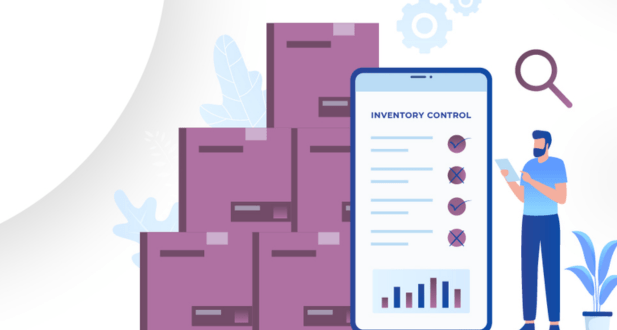
Key features of Odoo Inventory
Flawless Replenishments: Smart Strategies for Stock Optimization
Never running out of stock is a key goal for businesses, and Odoo Inventory achieves this through intelligent replenishment strategies. Whether employing minimum-maximum (min-max) rules, Make-to-Order (MTO), or the master production schedule, Odoo suggests or triggers purchase orders automatically. The system goes a step further by automating vendor follow-ups, minimizing communication risks by managing PO acknowledgments and receipt schedule confirmations.
Speeding Up Receipts, Quality Control, and Storage
Control over incoming and outgoing shipments is essential, and Odoo Inventory provides tools such as push and pull rules, GS-1 codes, and customizable routes. Put-away strategies further optimize storage by considering factors like slow-fast movers, ABC analysis, and cross-docking. These strategies reduce the number of parts moved and overall distances, streamlining warehouse operations.
Optimizing the Warehouse: Real-Time Inventory Management
Odoo Inventory offers real-time inventory management with a plethora of features. Serial numbers, lots, packaging, preservation strategies, cycle counting, Key Performance Indicators (KPIs), and more contribute to a holistic view of warehouse operations. The system ensures blazing-fast inventory lookups, allowing businesses to instantly locate products across multiple warehouses or companies.
Minimizing Picking Movements: Strategies for Efficiency
Efficient picking is a core aspect of warehouse management, and Odoo Inventory provides multiple strategies catering to different business needs:
- Single Picking: Ideal for straightforward order fulfillment, this strategy involves picking one order at a time.
- Cluster Picking: Suited for smaller products, cluster picking enables the picking of multiple orders in one trip, saving time at the packing stage.
- Wave Picking: This strategy involves launching picking orders per aisle or area, regrouping at the packing zone, and is particularly effective in large warehouses.
- Batch Picking: Suitable for multiple orders, batch picking consolidates at the packing zone, offering efficiency gains.
Implementing these strategies enables businesses to pick and pack more products with the same team, resulting in increased productivity.
Packing Made Easy: Integration with Carriers
Odoo Inventory seamlessly integrates with carriers, simplifying the packing process. The system supports the printing of shipping labels, quality controls, and packing units for various components such as parts, boxes, pallets, and more. This integration ensures that businesses can fulfill orders accurately and efficiently, meeting customer expectations for timely and error-free deliveries.
Additional Features
- Storage
- Locations:
Effortlessly create and manage specific storage locations, including shelves, aisles, cold storage rooms, and pallet racks.
- Putaway Rules:
Automatically route products to optimal storage locations based on real-time capacity, product storage needs, and picking accessibility.
- Operations:
Create dedicated locations for various warehouse operations, including receiving products, sorting, packing, and more.
- Smart Removal:
Choose product removal strategies such as FIFO, FEFO, nearest available zone, and LEFO, streamlining picker paths with the right picking methods.
- Operations
- Role-Based To-Do List:
Dedicated dashboards keep different teams on top of their daily tasks, ensuring orders are fulfilled on time, every time.
- Receipts:
Efficiently manage incoming shipments with vendor-provided arrival dates and automatic unit of measure conversion for received quantities.
- Returns:
Set predefined routes for return condition assessment, refurbishing, restocking, or disposal, seamlessly integrated with the Accounting app for accurate inventory valuation.
- Pick:
Create smart automatic batches based on shipping carriers, serial numbers, specific quantities, and total weight for convenient picking.
- Pack:
Assign barcodes to sealed packages for content tracking, with location updates reflecting the contained products’ whereabouts.
- Scrap:
Quickly scrap products and obtain clear reports on scrap costs, reasons, and volumes.
- Inventory Adjustments:
Schedule recurring stock counts on vital storage locations, products, or lots to keep inventory up to date.
- Advanced Routes:
- Drop-Ship:
Coordinate with suppliers to deliver certain products directly to customers.
- Cross-Dock:
Unload incoming material and transfer it directly to outbound gates with minimal storage in between.
- Push and Pull Rules:
Create custom routes to plan transfers between warehouses and locations.
- By Shipping Method:
Set up order fulfillment routes tailored to different shipping methods.
- Subcontracting:
Auto-generate delivery documents for raw materials, bill the subcontractor, and run quality checks before shipping subcontracted products to customers.
- Multi-Warehouse:
Efficiently manage storage, stock, and replenishments for all warehouses, handling transfers seamlessly.
- Productivity
- Barcode:
Streamline warehouse operations using a barcode scanner for receipts, pickings, and inventory adjustments, supporting GS1, EAN13, and EAN14.
- Customer Portal:
Empower customers to track order status, payment, and delivery, initiate returns, and generate printable barcodes with customized return instructions.
- Replenishment Alerts:
Notify procurement managers about low stock and vendor lead times to assist with reordering schedules.
- Smart Scheduler:
Autmate operations based on product availability and order forecasts.
- Search Products:
Locate products, their storage locations, and quantities through a single dashboard.
- Search by Barcode:
Efficiently locate warehouse documents by scanning barcodes.
- Reservation Methods:
Manage available stock using three methods: at confirmation, manual, or scheduled date, while considering customer priority.
- Replenishment
- Forecast:
Generate a forecasted report of on-hand, incoming, and outgoing stock in real-time, allowing swift reactions to vendor order deadlines.
- Purchase Orders:
Automatically create requests for quotation when stock forecasts fall below defined thresholds.
- Reordering Rules:
Trigger purchases, inter-warehouse transfers, and manufacturing orders based on customizable rules for minimum and maximum stock.
- Lead Times:
Manage just-in-time inventory with comprehensive lead planning inputs factored into every order.
- Make-to-Order:
Trigger purchase and manufacturing orders upon sales order confirmation with customizable routes.
- Traceability
- Quotation to Shipment:
Track every step of a product’s journey from vendor to customer in granular detail.
- Lots/Serial Numbers:
Track products from supplier to customer with dedicated reports for advanced tracing into after-sales services.
- Perpetual Inventory Valuation:
Generate real-time accounting records for a product from stock purchases, scraps, and other inventory actions.
- Audit Trail:
Log all user actions, including stock moves, counts, adjustments, and record modifications.
- Products
- Types:
Categorize products into storable, consumable, and services for effective inventory management.
- Expiration Dates:
Receive automatic reminders and set picking priorities based on best removal and expiration dates.
- Variants:
Customize product variants for customer preferences and make data-driven purchasing decisions with real-time stock counts.
- Custom Fields:
Add custom fields on warehouse transfer documents, products, and serial numbers for additional traceability.
- Vendor Price List:
Upload vendor price lists with product descriptions, prices, and delivery times.
- Shipping Labels:
Generate shipping labels for integrated carriers, supporting various carriers globally.
- Inventory Valuation
- Costing Methods:
Supports FIFO, AVCO, and standard price costing methods.
- Valuation Methods:
Supports continental or Anglo-Saxon accounting methods.
- Landed Costs:
Generate real-time cost reports based on vendor bills, taxes, tariffs, fuel surcharges, and other handling fees.
- Reporting
- Double Entry Inventory:
Full stock moves report to map and trace product moves from supplier to customer.
- Modify Posted Records:
Lock or unlock any warehouse document after it is posted to correct any mistakes in product consumption or prices.
- Stock Aging Report:
Monitor how long items have been in the warehouse, sorted by receipt date, to stay informed about products nearing expiration.
- Integrations
- Returns Integration:
Integrate with the Sales app for a streamlined return process, providing customers with return instructions and status updates in the Customer Portal.
- Calculate Shipping:
Integrate with third-party shipping carriers to calculate shipping costs based on product weights and customer addresses.
- Blanket Orders:
Schedule recurring orders with pre-defined vendors, order quantities, and expected arrival dates for cost savings.
- Quality Checks:
Set up recurring inspection checks at any point in the warehouse flow, ensuring product quality.
- Development:
Customize and adapt Odoo using the API to integrate with third-party logistics services, hardware devices like scales, barcode scanners, and RFID systems.
- Rental:
Manage pickups, packing, shipping, and return of rental products directly in Inventory.Odoo Inventory offers a complete warehouse management solution for organizations. From smart replenishment plans to seamless order tracking and extensive reporting, Odoo Inventory helps organizations optimize warehouse operations, decrease expenses, and provide excellent customer service. Odoo Inventory helps firms manage inventory and supply chain complexity with its user-friendly interface and integration features.
Odoo Manufacturing
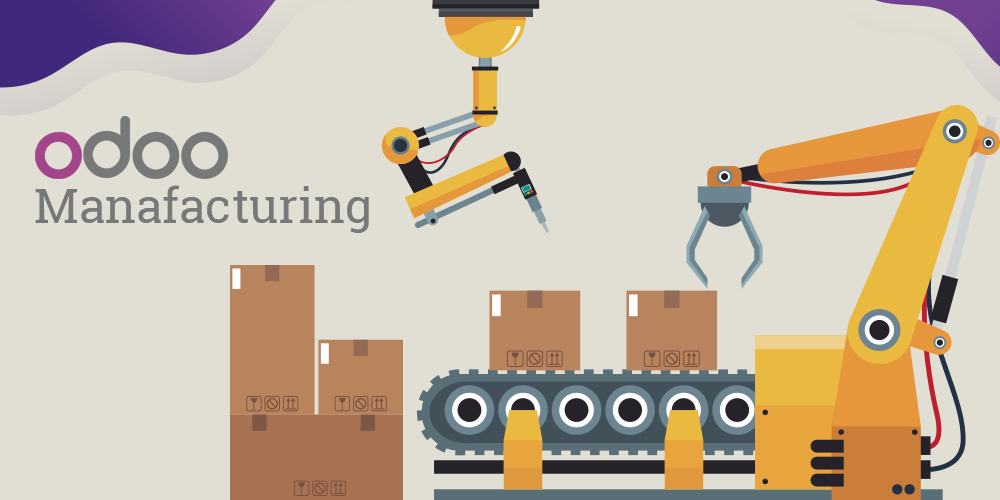
Odoo Manufacturing stands as the premier solution for lean manufacturing, integrating MRP, MES, PLM, Quality, Shop Floor, and Maintenance into a single, user-friendly platform. This comprehensive system provides real-time simulated operations, just-in-time replenishment, and advanced planning capabilities.
Key Features:
- Real-time Simulated Operations:
Simulate manufacturing orders with real-time capacity planning, components availability, and cost control. Receive just-in-time replenishment proposals and choose fulfillment methods like make or buy, sub-contracting, or delivery from another warehouse.
- Advanced Planning:
Schedule manufacturing orders and plan resources with finite capacity planning. Fine-tune operations effortlessly using the Gantt chart for improved efficiency.
- Production and Component Recording:
Record production and components to streamline operations, accelerate processes, and reduce input errors. The system is designed to work seamlessly out of the box with blazing-fast performance and no latency.
- Paperless Manufacturing:
The Shop Floor app optimizes the manufacturing line, offering a tablet-optimized dashboard to organize workers, workcenters, worksheets, quality tests, and more, promoting a paperless environment.
- Six-Sigma Level Quality:
Achieve Six-Sigma level quality with statistical analysis of quality issues and instant access to control points on the shop floor. The app facilitates worker feedback, ensuring a smooth flow of ideas and information for elevated quality levels.
- Kaizen Tool:
Odoo Manufacturing serves as the perfect tool for Kaizen, enabling continuous improvement. Workers can seamlessly provide feedback through the app, identifying waste in the manufacturing process and contributing to an enhanced quality environment.
Additional features
- Manage
- Manufacturing Orders:
Efficiently organize your products into assembly lines or manual assembly processes.
- Work Orders:
Initiate the production of items required for the final assembly of your products.
- Barcode Integration:
Utilize barcodes to expedite manufacturing operations, including lot or serial number scanning, start/pause/stopwatch functionality, maintenance request triggers, and progression to the next step.
- Repair Orders:
Effectively manage repairs for items under warranty or as part of a service.
- Editable MOs:
Modify manufacturing orders post-completion, allowing the consumption of other products beyond the initial plan.
- Unbilled Orders:
Disassemble a finished product and recover its components seamlessly.
- Schedule & Plan
- Plan Manufacturing:
Gain a comprehensive view of your entire plan and easily reschedule manufacturing activities.
- Organize Work Orders:
Access all available resources and plan ahead for your production needs.
- Bill of Materials Management:
Keep tabs on item availability in stock and production timelines.
- Work Center Capacity:
Utilize the MRP Scheduler to schedule work at each work center based on OEE and capacity.
- Flexible Master Data
- Multi-level Bills of Materials:
Establish a Bill of Materials within another to manufacture components of a product in a different Bill of Materials.
- Optional Routing:
Create new routings for work orders to sequence production based on the routing used.
- Version Changes:
Allow your products to evolve and add configurable options when creating orders.
- Kits:
Utilize the Kit feature for selling products delivered as a set of components to assemble.
- PLM
- Versioning:
Effortlessly track differences between versions to monitor changes.
- PLM (Product Lifecycle Management):
Track versions of products and Engineering Change Orders (ECOs) along with their respective documents. Merge different ECOs corresponding to the same Bill of Materials.
- Engineering Changes:
Track changes with a streamlined Kanban process for ECOs.
- Document Management:
Store plans and worksheets directly on the Bill of Materials and routings.
- Quality
- Control Points:
Automatically trigger quality checks for the manufacturing department.
- Quality Checks:
Deploy statistical process control with ease through quality checks.
- Quality Alerts:
Organize work efficiently using the Kanban view of quality alerts.
- Maintenance
- Preventive Maintenance:
Automatically trigger maintenance requests based on Key Performance Indicators (KPIs).
- Corrective Maintenance:
Initiate corrective maintenance directly from the control center panel.
- Calendar Integration:
Schedule maintenance operations seamlessly with a calendar.
- Statistics:
Access all maintenance statistics computed for you, including Mean Time Between Failures (MTBF).
- Workcenter Control Panel
- Tablets Integration:
Set up tablets in every work center to optimize their work organization.
- Record Production:
Register productions and scan products, lots, or serial numbers efficiently.
- Worksheets:
Display worksheets directly on the work center with instructions for the operator.
- Misc Operations:
Scrap products, create quality alerts, and perform checks right from the work center.
- Alerts:
Utilize alerts to notify operators of changes or quality checks.
- Work Order Steps:
Define multiple steps in a work order and link them to worksheet pages, such as scanning a product, taking a picture, quality control, etc.
- Reporting
- Traceability:
Access a full upstream traceability report on the components used during the manufacturing process.
- Cost Analysis:
Track the cost of each manufacturing order based on the cost of components and operations (labor or material).
- Overall Equipment Effectiveness:
Analyze work center loads, productivity losses, and track Overall Equipment Effectiveness (OEE).
Comprehensively, Odoo Manufacturing streamlines production management. Real-time simulated operations, just-in-time replenishment, barcode integration, repair order management, and advanced planning boost industry productivity, quality, and efficiency with Odoo Manufacturing. Because it can easily react to changes, track versions, and ease preventative and corrective maintenance, the system can help manufacturing companies achieve operational excellence. Odoo Manufacturing gives companies a complete, easy-to-use platform to improve manufacturing workflows and results.
Odoo PLM
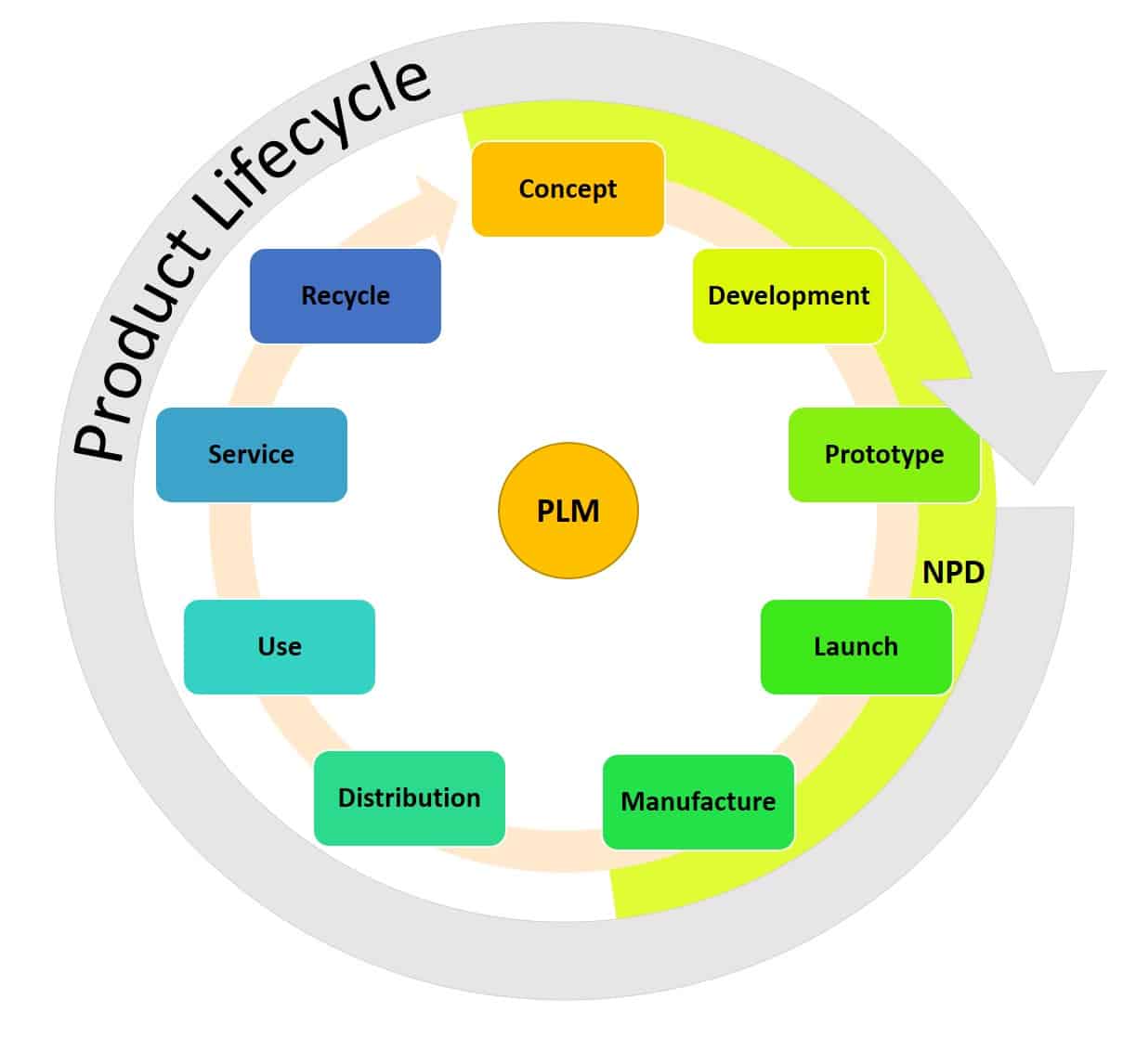
Odoo Product Lifecycle Management (PLM) stands as a robust collaborative version control application designed to enhance the management of bills of materials throughout the entire product lifecycle – from initial design to production and beyond. This comprehensive solution ensures stable version control for products, streamlining the engineering process for improved efficiency.
Key Features of Odoo PLM:
- Stable Version Control:
Odoo PLM provides a stable and collaborative environment for version control, ensuring seamless management of bills of materials at every stage of the product lifecycle.
- Efficient Engineering Changes:
Managing engineering changes becomes effortless with real-time communication facilitated by Odoo PLM. The platform leverages an enterprise social network, enhancing communication across departments, simplifying approvals, and centralizing discussions on documents.
- Integrated Document Management:
Odoo PLM seamlessly integrates document management for drawings, worksheets, and quality documents. Triggered alerts on worksheets or work center control panels facilitate the smooth transfer of information to manufacturing.
- Document Attachment:
Attach documents directly to bills of materials (BoMs), routings, or any relevant location. Odoo PLM ensures that documents are easily accessible and can be efficiently managed with multiple versions.
- Smart Versioning:
Efficiently manage multiple versions of documents with Odoo PLM. The application eliminates the need for syncing Engineering BoM (EBoM) and Manufacturing BoM (MBoM), aligning every department on the same documents for streamlined tracking of changes.
- Diff and Merge Functionality:
Odoo PLM offers smart versioning with efficient diff and merge capabilities. Work on several versions of the same BoM in parallel and apply only the differences, simplifying the management of multiple changes.
In conclusion, Odoo PLM optimizes product lifecycle management well. Stable version control, quick engineering change handling, integrated document management, and smart versioning make it a complete solution for enterprises looking to improve collaboration and streamline procedures across departments. Odoo PLM helps organizations manage bills of materials before, during, and after production by centralizing communication, document attachment, and smart versioning. This collaborative and user-friendly platform advances product development and manufacturing operational excellence.
Odoo Purchase

Odoo Purchase, an all-in-one procurement software, empowers businesses to resupply faster and ensure they never run out of stock. From generating RFQs to managing receipts and vendor bills, Odoo Purchase simplifies the procurement process, making it more efficient and automated.
Key Features of Odoo Purchase:
- Automated RFQs:
Odoo Purchase streamlines RFQs and purchase orders with automated reordering rules. Businesses can create custom rules and replenishment methods, allowing for a hands-off approach to routine procurement tasks.
- Flexible Purchase Agreements:
Optimize procurement through customizable and automated purchase agreements. Secure the best prices with alternative RFQs, compare product lines, and simplify recurring orders with blanket orders, providing flexibility for every situation.
- Vendor Payment Control:
Odoo Purchase enables businesses to charge vendors on their terms. Create singular or split vendor bills at any time and pay based on ordered or received quantities. Integration with the Accounting app allows for easy tracking of payment statuses.
- Comprehensive Procurement Support:
Odoo Purchase addresses the small yet critical aspects of procurement, including variants, packaging, units of measure, and more. Integration with Point of Sale and e-commerce systems ensures a seamless and integrated procurement ecosystem.
Additional Features
- Clean & fast
- Modern User Interface:
Experience a sleek and fast user interface designed for efficient inventory management, enabling productivity with or without barcode scanners.
- Control Vendor Bills:
Ensure accuracy in payments with a 3-way matching system, comparing information on Purchase Orders, Vendor Bills, and Receipts.
- Purchase Tenders:
Effortlessly launch purchase tenders, integrate vendor responses, compare propositions, and make informed decisions with integrated reporting.
- Blanket Order Agreement:
Secure goods at negotiated prices through recurring blanket order agreements with suppliers over specific periods.
- Requests for Quotations
- Customizable RfQs for Suppliers:
Configure products to send Requests for Quotations (RfQs) to suppliers individually for efficient procurement.
- Effortless RfQ Delivery:
Send RfQs through email directly from the app or print and send them via post with a single click.
- RfQs for Multiple Products:
Simplify procurement by sending out RfQs for multiple products simultaneously.
- Personalized Supplier Messages:
Add custom messages to RfQs for personalized communication with suppliers.
- Automated RfQ Process:
Save time by automating the RfQ process with rules based on stock levels, ensuring timely communication with suppliers.
- Variants Grid Entry:
Enhance purchase orders by adding product variants with a grid displaying all possible attribute combinations.
- Manage orders
- Monitoring RfQs and Orders:
Keep track of quote and order status, order amounts, and expected delivery dates. Auto-complete draft invoices for efficiency.
- Efficient Management of Incoming Products:
Monitor stock, quantities, and locations for each batch of received items.
- Automated Ordering:
Set procurement rules to automatically order items based on stock levels, minimum quantities, sales, or other parameters.
- Manage invoicing
- Draft Invoice Creation:
Design draft invoices for easy modification or cancellation.
- Future Order Control:
Track orders scheduled for future dates to stay organized.
- Internal Moves Handling:
Organize the movement of items between two owned locations.
- Handle Products
- Product Creation with Key Details:
Easily define sale price, type, barcode, reference, supplier reference, and product variants.
- Supplier Reference Search Filters:
Efficiently search for products using supplier references on purchase orders.
- Units of Measure Management:
Purchase in different units of measure, letting Odoo manage the conversion seamlessly.
- Stock and Availability Checking:
Keep tabs on stock, incoming orders, and product availability.
- Storage Location Specification:
Define precise storage locations for products within your warehouse.
- Sale Conditions Definition:
Define warranty length, customer and manufacturer lead times for product specifications.
- POS and Website Specifications:
Add product specifications for point of sale and website purposes.
- Accounting Rules Inclusion:
Specify accounting category, customer and supplier accounts, and taxes for comprehensive financial management.
- Analyze & forecast
- Dashboard Utilization:
Utilize predefined or custom dashboards with the advanced reporting engine for enhanced visibility.
- Inventory Forecasts:
Obtain forecasts of product availability based on confirmed sales orders, purchase orders, manufacturing orders, and internal moves.
- Multi company rules
- Automatic Reconciliation between Companies:
Save time and effort by automating reconciliation of transactions between different companies within a group.
- One Odoo Environment for Multiple Companies:
Manage multiple companies seamlessly within a single Odoo environment.
Odoo Purchase emerges as a comprehensive solution, streamlining procurement with modern UI, automated processes, and effective vendor management. With features like blanket order agreements, personalized RfQs, and automated reconciliation, Odoo Purchase ensures efficient and error-free procurement, empowering businesses to resupply faster and maintain optimal stock levels.
Odoo Maintenance

Odoo Maintenance, designed for modern manufacturers, is a powerful software solution that addresses the root causes of defects and ensures quality throughout the product life cycle. With user-friendly Kanban and calendar views, automated preventive maintenance, and increased equipment effectiveness, Odoo Maintenance optimizes efficiency and reduces downtime.
Key Features of Odoo Maintenance:
- Maintenance Organization with Kanban and Calendar Views:
Efficiently organize maintenance requests using intuitive Kanban views and plan activities with the maintenance calendar. The fast drag-and-drop interface simplifies request organization for enhanced team collaboration.
- Automated Preventive Maintenance:
Odoo computes essential statistics such as MTBF, MTTR, and expected next failure date to automate preventive maintenance scheduling. This ensures that your manufacturing line runs smoothly, reducing the risk of unplanned downtime.
- Increased Equipment Effectiveness:
Empower the manufacturing department to trigger maintenance requests directly from the work center control panel. Real-time updates to the relevant personnel enhance communication, reducing downtime and improving overall manufacturing efficiency.
- Dashboard & Statistics for Performance Optimization:
Leverage automatically computed statistics like MTBF and MTBR to fine-tune preventive maintenance rules and minimize equipment failure risks. The dashboard provides a comprehensive view of performance, and custom KPIs can be easily created to track and optimize efficiency.
In conclusion, Odoo Maintenance stands as a vital tool for modern manufacturers, offering a streamlined approach to maintenance organization, automated preventive measures, and increased equipment effectiveness. The software’s user-friendly interface, real-time communication capabilities, and performance tracking through dashboards make it an indispensable asset for optimizing manufacturing processes and reducing downtime. With Odoo Maintenance, businesses can proactively address maintenance needs, ensuring a more efficient and reliable production environment.
Odoo Quality

Odoo Quality stands as the premier solution to tackle the root causes of costly defects and ensure top-notch quality throughout the entire product life cycle. Offering seamless quality inspections without disrupting manufacturing processes, Odoo Quality empowers businesses to zero in on defects, create tailored quality checks, and put quality teams in control with customizable worksheets.
Key Features of Odoo Quality:
- Defect Identification with Quality Alerts:
Create quality alerts to pinpoint and address product defects swiftly, specifying root causes, and proposing corrective and preventive actions.
- Tailored Quality Check Configurations:
Effortlessly configure various quality check types to ensure thorough inspections, catering to the unique requirements of each product.
- Dedicated Quality Teams:
Establish unlimited quality teams dedicated to specific products or operations. Assign quality checks and alerts to these teams for efficient review.
- Interactive Worksheets for Custom Checks:
Streamline the quality check process with interactive worksheets, making it easy for employees to conduct and document inspections.
- Detailed Quality Reporting:
Access comprehensive statistics on quality checks and alerts, gaining insights into inspection frequency and common defect types.
- Priority Assignment for Alerts:
Assign priority ratings (one to three stars) to quality alerts, ensuring urgent issues are promptly addressed.
- Granular Inspection Requests:
Request quality checks for entire manufacturing orders or specific work orders, tailoring inspections to specific requirements.
- Seamless Order Integration:
Complete quality checks directly from manufacturing or inventory orders without the need to open the Quality app separately.
- Kanban View for Alert Management:
Manage quality alerts efficiently by navigating through customizable review stages in the Kanban view.
In conclusion, Odoo Quality emerges as a pivotal solution for businesses committed to elevating product quality. With features like customizable inspections, interactive worksheets, and seamless order integration, Odoo Quality empowers organizations to proactively address defects, prioritize urgent issues, and streamline the quality management process. By providing detailed insights and facilitating efficient collaboration through dedicated quality teams, Odoo Quality ensures that every product undergoes thorough inspection, contributing to a higher standard of quality across the entire product life cycle.


